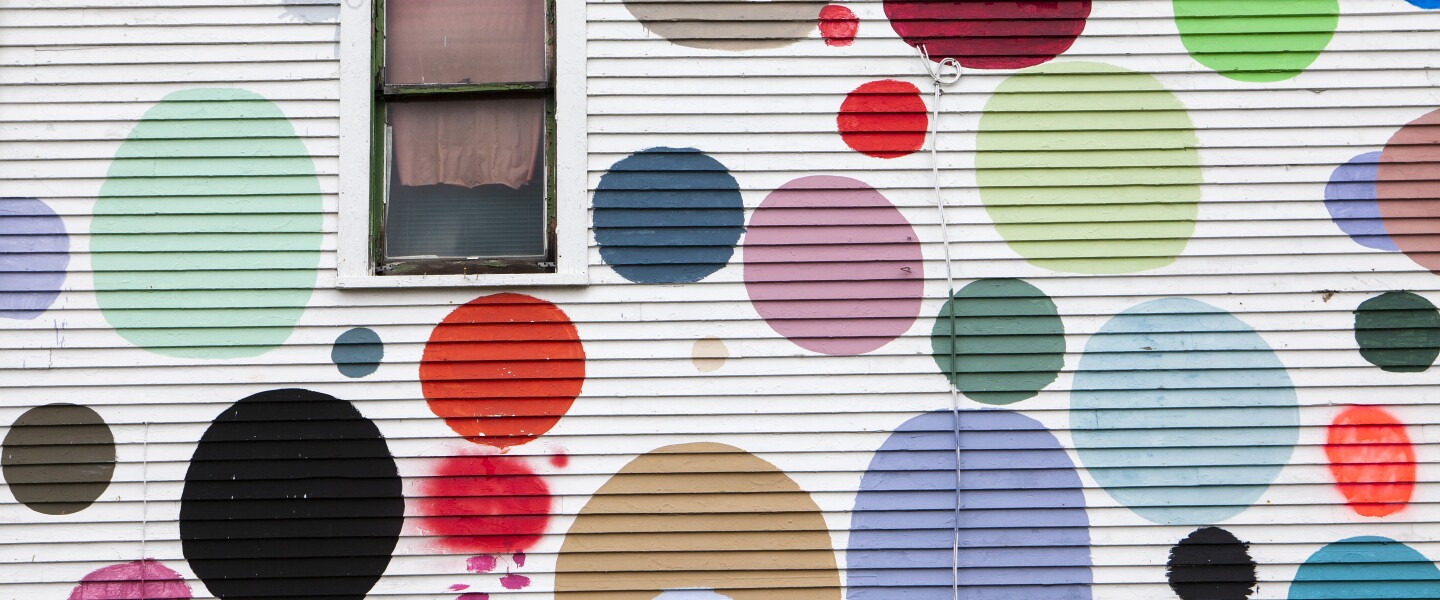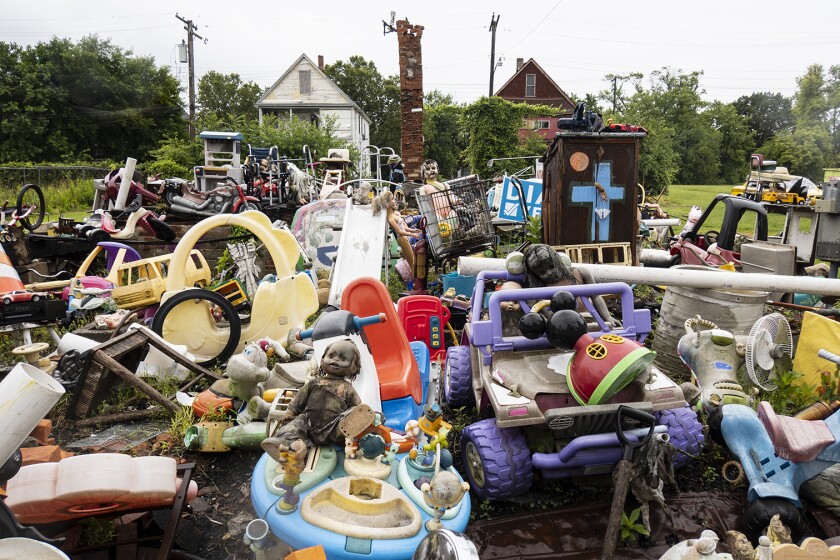
(Photos by David Kidd)
Thirty-five years ago, Guyton returned to his childhood neighborhood to find trash-strewn vacant lots, abandoned houses, drugs, violence and entrenched poverty. With the help of his grandfather and neighborhood kids, he began to clean up the area, collecting and repurposing discarded items and debris into works of art. It was a way to put a spotlight on a culture of waste, reclaim his neighborhood and bring attention to a part of the city sorely in need of help.
Splashed with color, Guyton’s grandfather’s big white house was the first to be used as a canvas. Over the years, several more would follow. The “Party Animal House” was festooned with stuffed animals. Nearby, the “House of Soul” was decorated with hundreds of vinyl record albums. Covering two blocks, the Heidelberg Project has lured gawkers and professional art aficionados alike, earning praise from some and derision from others.
Not universally appreciated, Guyton’s creation has survived several attacks over the years, from both arsonists and city officials. Thought to be an eyesore and embarrassment to a city in decline, the local government moved in to demolish houses that were part of the installation, once in 1989 and again two years later. In November of 2013, the House of Soul was the first of several to be burned to the ground over the next two years. In spite of increased security and surveillance, the latest attack came two years ago. No one has been charged.
In spite of everything, Tyree Guyton has refused to give up. According to the guest book and before the pandemic, 150,000 visitors from 144 countries were coming to see his artwork every year, making the Heidelberg Project the third-most-visited cultural attraction in Detroit.
In 2016, Guyton announced the beginning of Heidelberg 3.0, a reimagining of his sprawling outdoor artwork. A number of his pieces will be removed, some headed to the dumpster, some to museums where they will be safe. One man’s creation will evolve into a community of artists who live and work in the remaining houses. Having successfully reclaimed a forgotten few blocks in a hollowed out city, the Heidelberg Project will be at the center of whatever comes next for the neighborhood.















Related Articles












